

The pictures on the left are links to a page featuring that area. Use the "back" button on your browser to return to this page.
In the right-hand column is a picture of the whole Moon (at about the same phase as the picture on the left) indicating where the area is situated.
Lunar Features and Notes
Here I discuss briefly the different features on the Moon and how they may have been formed. I also
cover the modern conventions of which way is up, and which way is West, and indicate my sources of information.
I have made every effort to be accurate but please be aware that I am not infallible and bring to my attention any
errors you may find. I will attempt to correct them speedily.
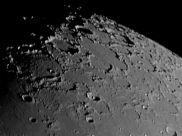
This is a rugged area just to the east of the north pole where all the craters appear considerably foreshortened due to perspective.
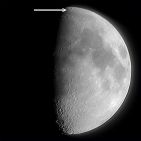
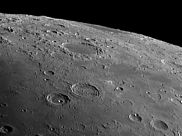
This is an area in the far north-east and features Atlas and Endymion.
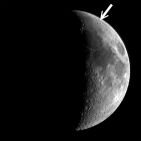
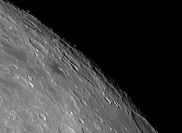
This is the north-east region just south of the area above and features Mercurius.
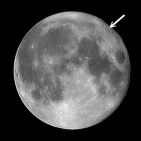
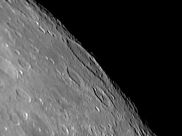
This is south of the area shown above and is to the north and east of Mare Crisium. The major crater is Gauss..
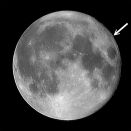
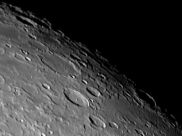
This is the area to the west of the one above. The major craters are Messala and Geminus. .
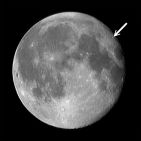
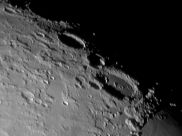
Just south of the area above is Cleomedes, an unremarkable crater on the northern margins of the Mare Crisium.
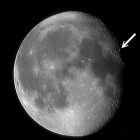
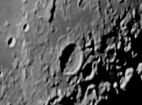
This is an area just north-west of Mare Crisium. The major crater is Macrobius, a circular formation 66 Km in diameter.
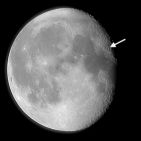
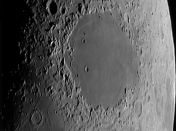
And this is the Mare Crisium on the Moon's eastern limb.
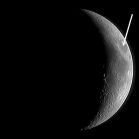
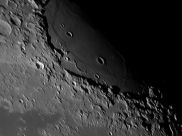
This is the western side of the Mare Crisium imaged at sunset, which brings out the dorsum along the edge of the basin.
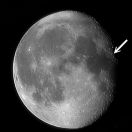
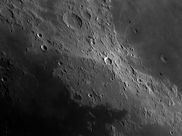
Proclus, a very new crater on the western shores of Mare Crisium. On this page I also discuss oblique impacts and the effects on rays.
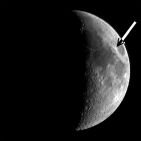
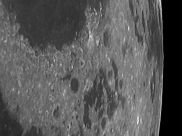
South of Mare Crisium and in the eastern libration zone is Mare Marginis. The page includes a link to a picture covering Mare Smythii, further south in the libration zone.
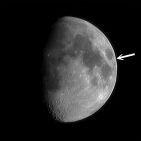
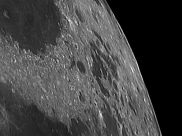
Mare Undarum is an irregular patch of lava south of Mare Crisium. It is south-west of Mare Marginis, pictured above.
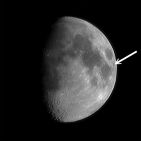
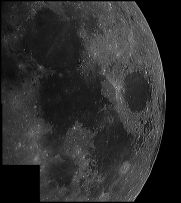
A mosaic of much of the eastern side of the Moon concentrating on the maria, from Serentatis is the north to Nectaris in the south.
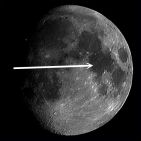
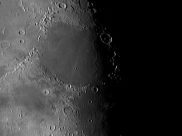
The Mare Serenitatis (the Sea of Serenity), 303,000 sq Km and one of the less well-defined impact basins.
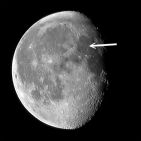
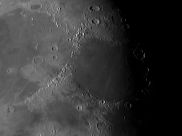
The Mountains between the Maria Imbrium and Serenitatis. There are some anomalies about these mountains, the Apennines are clearly associated with Mare Imbrium, but to which mare do the Caucasus belong?
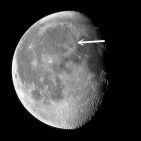
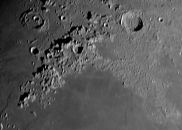
The Caucasus Mountains separate Mare Imbrium from the northern part of Mare Serenitatis, but they don't
appear to be associated with either of these basins; they are not arcuate to either basin.
The picture was taken when the Moon was 8.4 days old.
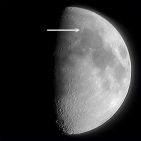
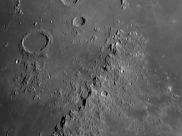
These are the Apennine Mountains which mark the south-eastern boarder of Mare Imbrium, and it was in the north of this range where Apollo 15 landed close to Hadley Rille.
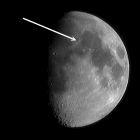
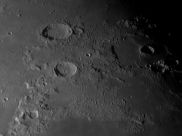
Aristoteles and Eudoxus are two craters in the northern part of the Caucasus Mountains. In several ways they are atypical craters.
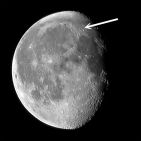
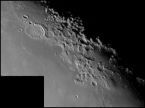
This is a mosaic of two pictures of the eastern shores of the Mare Serenitatis, extending from Daniell and Posidonius in the north to the landing site of Apollo 17, Vitruvius and Dawes in the south.
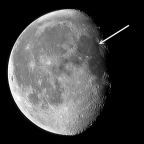
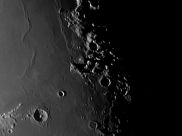
This picture is of the south-eastern corner of the Mare Serenitatis. The terminator is very close so the Sun was very low here. This brings out the wrinkle ridges in this part of the mare, in particular the Serpentine Ridge. The landing site of Apollo 17 is nearby.
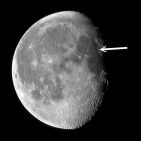
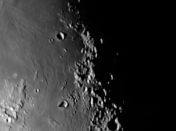
This is at the southern end of Mare Tranquilitatis where it runs into Sinus Asperitatis. The only interesting crater here is the oddly-shaped Torricelli.
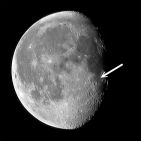
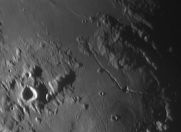
Rima Hyginus is a long rille in an area just south of Mare Vaporum, which is the dark patch just south-west of Mare Serenitatis. The Rima is 226 km long and, near its centre, is a small crater, Hyginus, which has been reported as showing transient lunar phenomena, vapours being emitted from below the surface. This seems appropriate considering its proximity to Mare Vaporum (the Sea of Vapours).
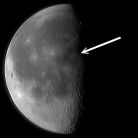
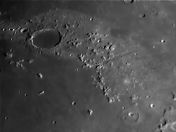
This picture shows Plato in its setting in the Lunar Alps. The Alpine Valley, a broad valley running approximately east-west, can be seen near the centre of this picture.
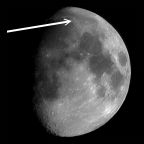
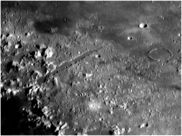
Here are three pictures of the Alpine Valley, which is 150 Km long and 8 Km wide, a remarkably straight valley cutting through the Lunar Alps. The page contains three pictures, one taken on a night of exceptional seeing, one taken at sunset over the valley and one at sunrise.

Home Back to the Moon